Visiting the Least Visited National Park
Travel Log: 30 June 2012
The least visited National Park (in the lower 48 states) is Isle Royale National Park. Isle Royale is the largest island located in Lake Superior with its widest measurements at 45 miles long and up to 9 miles tall. There are no roads on the island, no permanent residents, but it does offer 170 miles of hiking trails making it popular for week long backpackers where the goal is to either travel from one tip of the island to the other or to circumnavigate the entire island. (Something I'd love to do!) And, even though it is a 1.5ish hour ferry ride from Minnesota and a 3.5ish hour ferry ride from Michigan, the island is technically considered part of Michigan. Silly Michigan snagging the island for copper first!
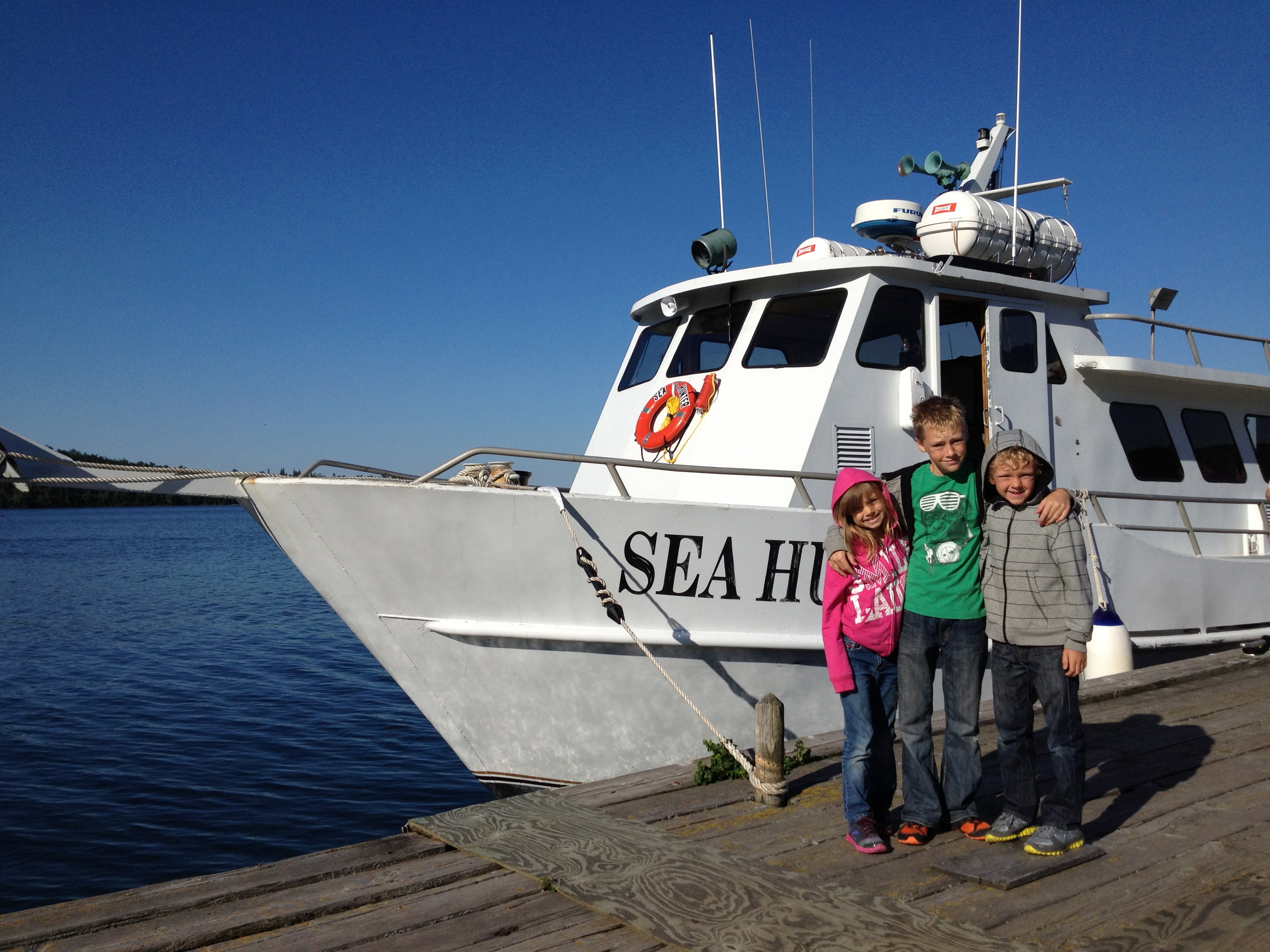
We made online reservations for the ferry departing from Grand Portage, Minnesota. We woke up very early to make the drive from Grand Marais to Grand Portage, packed up a daypack of food and water, and packed up fishing gear for the boys (since they could fish without having Michigan fishing licenses), and headed out. In rare form, the 1.5 hour ferry ride was calm on our way to the island.
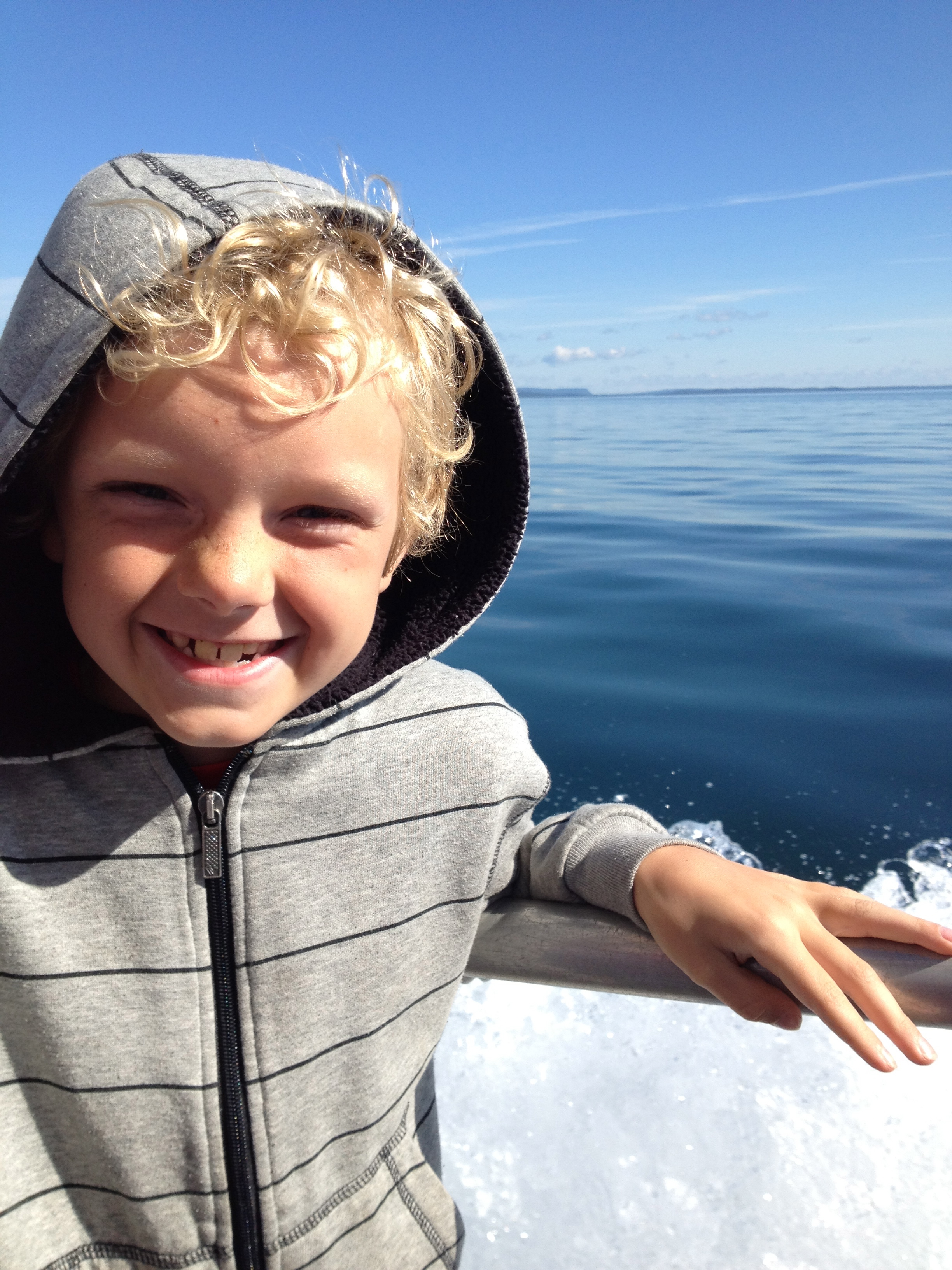
Once on the island, we learned about the Junior Ranger Program that the National Parks Service offers. For as many national parks as we have been to, I couldn't believe we had never heard of this before. Each park offers a different set of hoops that a person has to jump through to receive the junior ranger badge displaying the park visited's name. Sometimes it is filling out an entire booklet, sometimes answering a quiz from a park ranger, and sometimes you can just look cute. Whatever the hoop, our kids did this here for the first time and have loved doing at other national parks and monuments since.
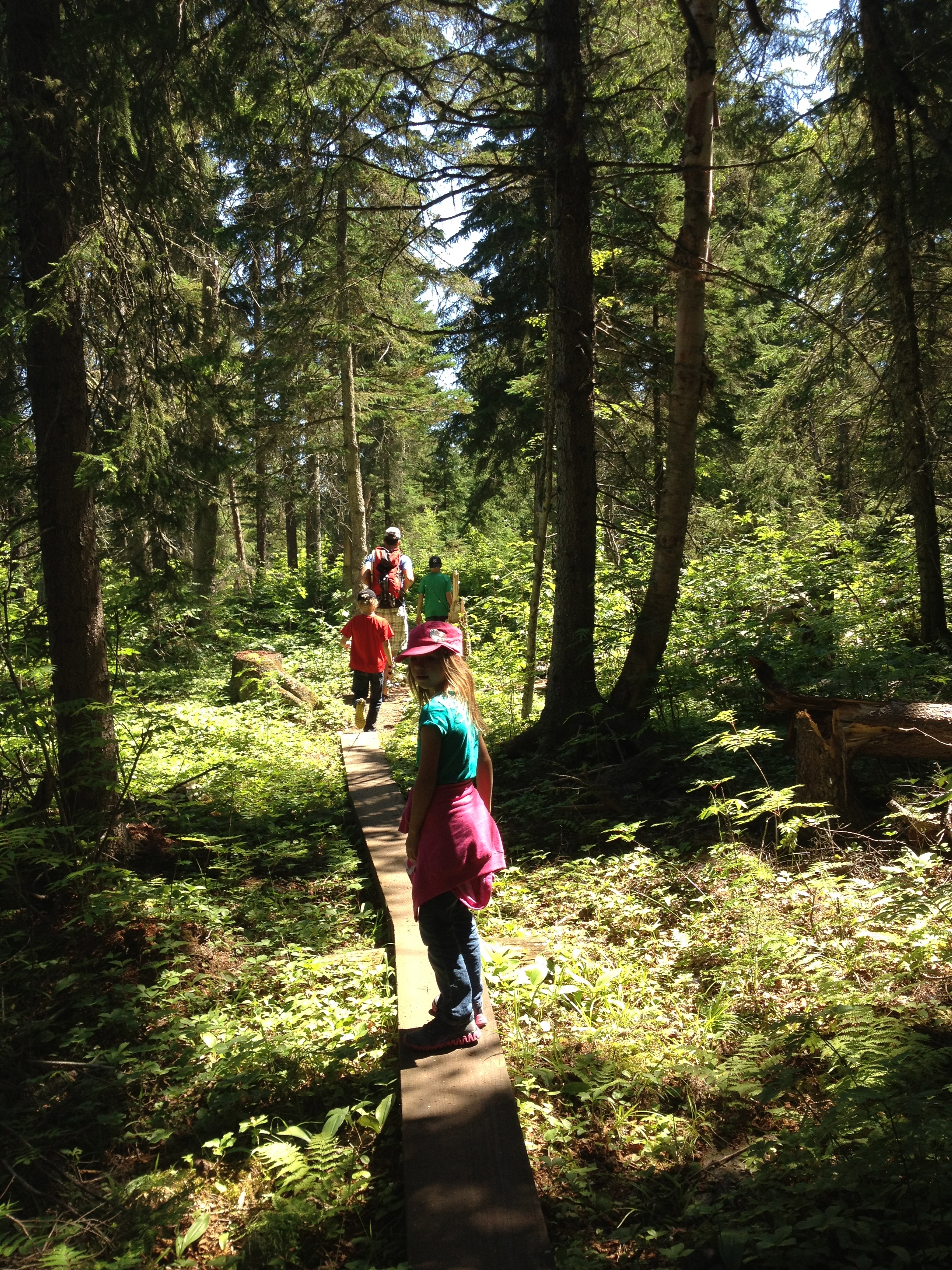
We hiked into the interior of the island to find little inner lakes for the boys to fish in and we hoped to spy an elusive moose. A hundred years prior, moose swam over from Canada and settled happily on Isle Royale. Years later a pair of wolves made the crossing on the frozen lake. Interestingly enough, since the 1950's the balance of predator and prey, moose vs. wolf, has been studied and recorded by scientists. In the mid-ninties, when Josh was there for a hiking trip across the island, the island was teeming with moose. When reminded of it, he always proclaims, "There were SO many moose! They were everywhere!" Because the animals are studied so closely, we learned that the population of wolves was down back then due to a person (illegally) bringing their dog to the island that had a virus that infected the wolves. However, upon our visit this time, the population of moose and wolves were way down due to a current disease affecting the moose and without moose to eat the wolf population was down. How amazing to have such a contained ecosystem to study at your disposal!
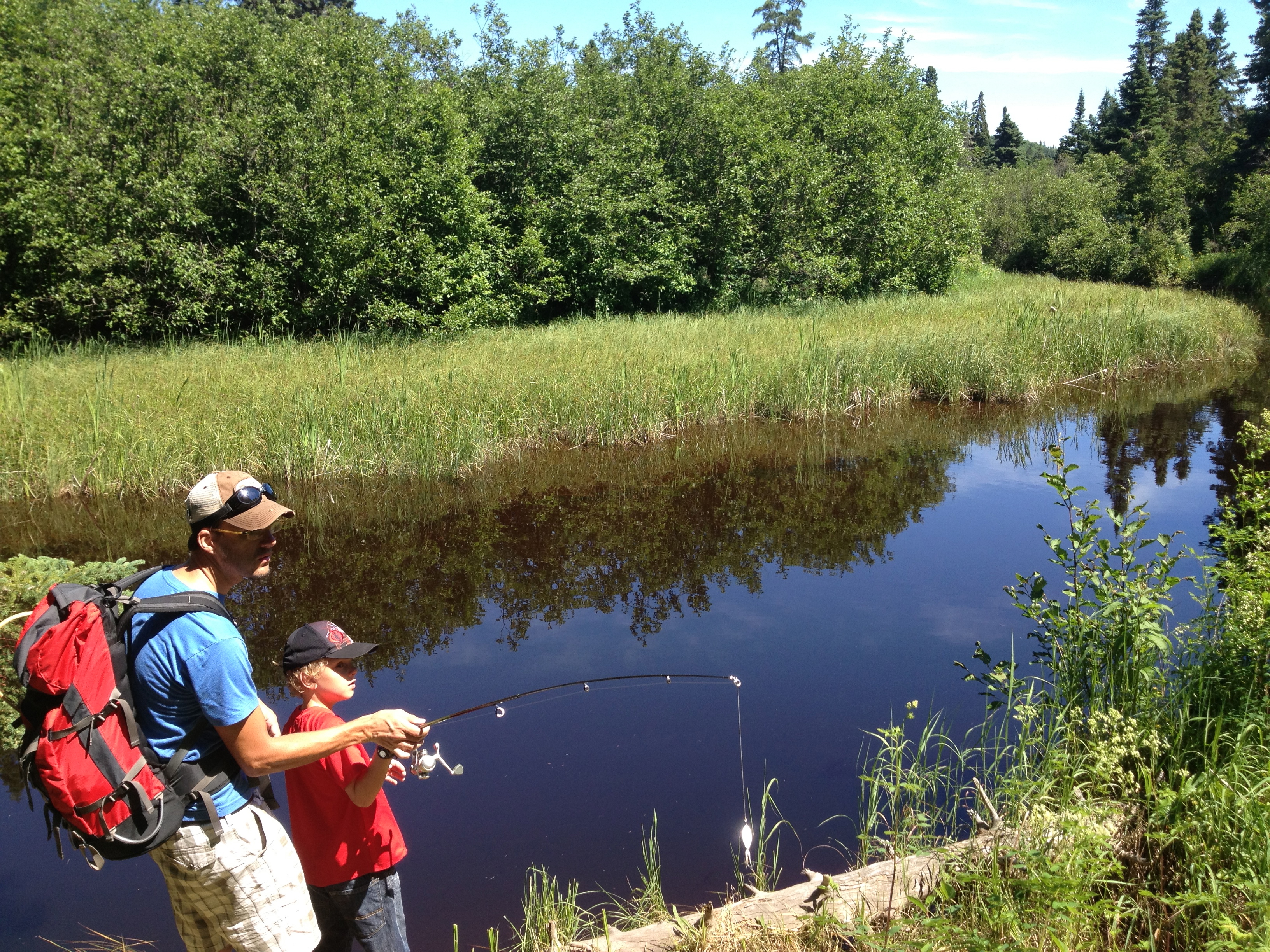
The ride back to Grand Portage was cold and bumpy. Everyone welcomed the, now, 2.5 hour ride as a way to rest from the day's hiking. This proved to be a blessing also because we decided to stop at the Grand Portage National Monument on our way back to Grand Marais.
The Grand Portage National Monument tells the history of the fur trading industry of the late 1700's. They have a newly constructed welcome center that tells the history and has artifacts, but the truly wonderful part of the monument is the Historic Depot. Although the buildings are replicas built in the 1930's, they have taken great measures to recreate the trading company accurately with a great hall, kitchen, canoe warehouse, gatehouse, and on the outskirts an Ojibwe village, voyageur's encampment, and a historic garden. During the summer months, the Historic Depot literally comes alive as an interpretive exhibit. They have an incredibly knowledgable stafff that dress and work as those of the time period. There was a man working in the kitchen, making authentic recipes with authentic tools and sharing the results with visitors. There was a man in the canoe warehouse who was building an authentic canoe of the period, using the same tools, and, admittedly, on his 4th summer working on the same project. There was a woman tending to the Three Sisters garden and another woman tanning a hide to make new shoes for herself. (It is not unlike Living History Farms in Iowa, but this is free and, no offense, the high level of skill and detail by the Grand Portage staff doesn't compare, :)!)
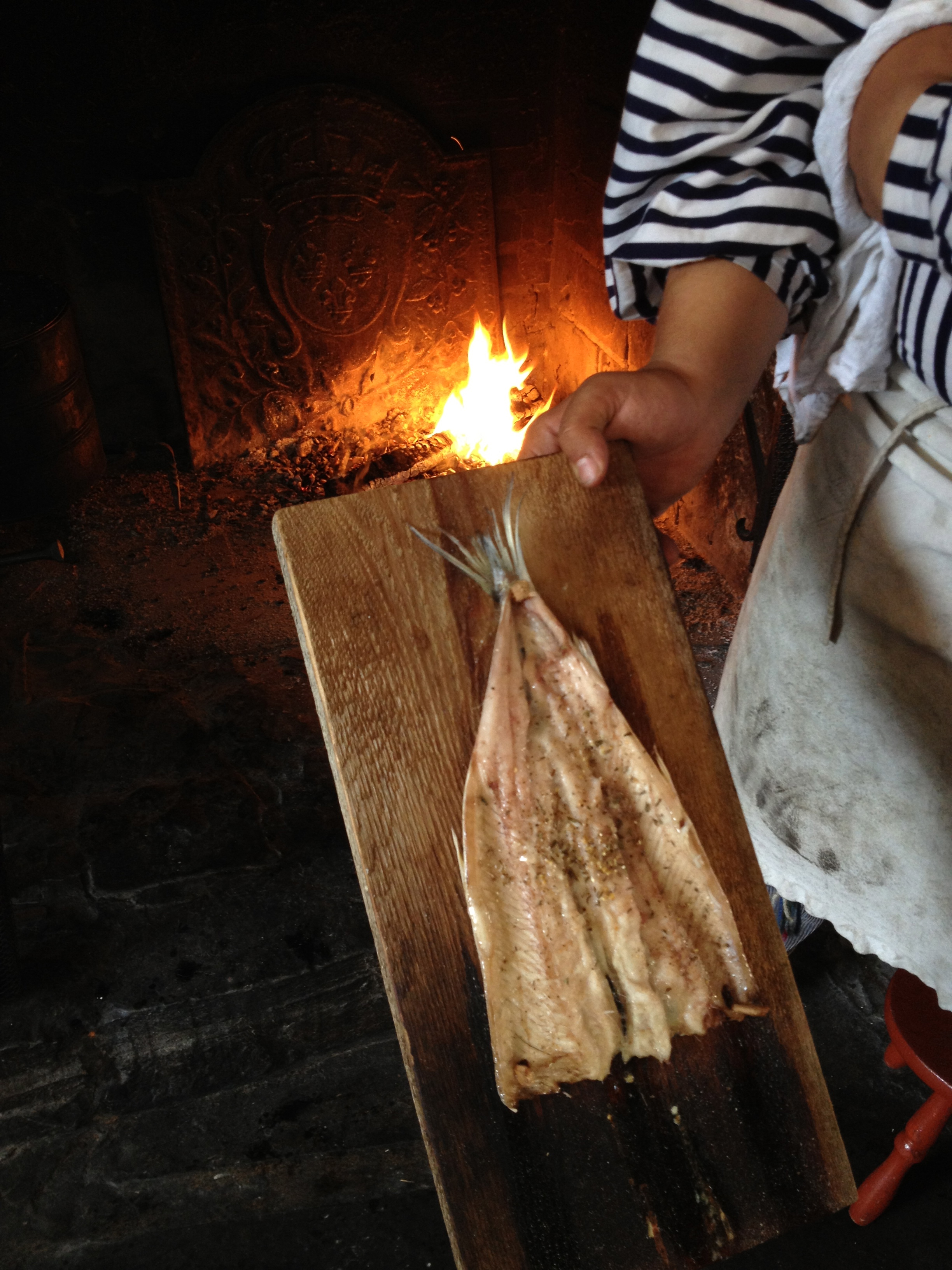
Herring, filleted, held on a board by wooden nails, and placed inside a fire to cook, and samples are served.
After acquiring another national parks' junior ranger badge, we headed back to our cabin on the shore for a quick dinner and then back outside for a visit to the lake once again. We have yet to tire of the lake.
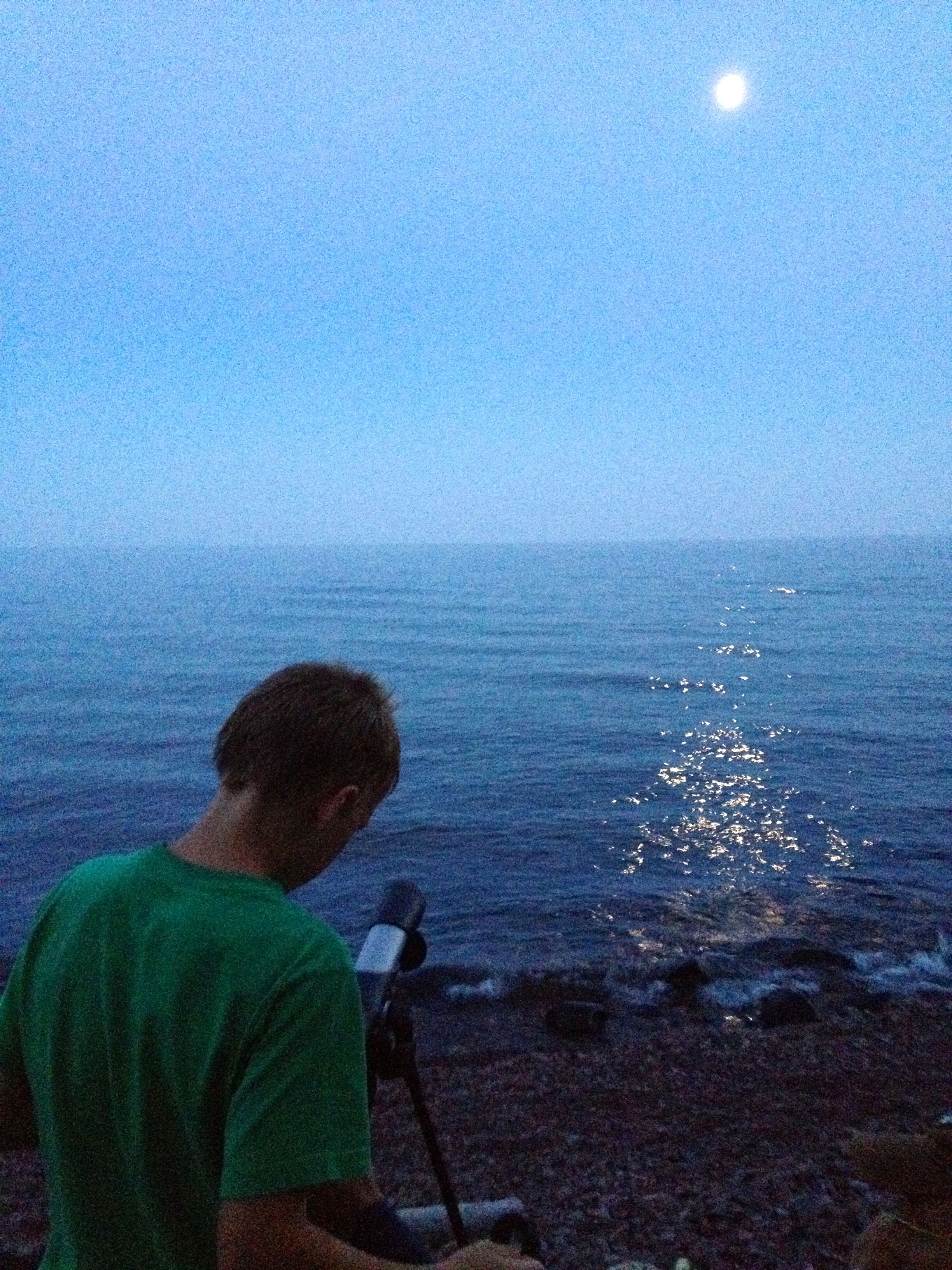



Response to Visiting the Least Visited National Park